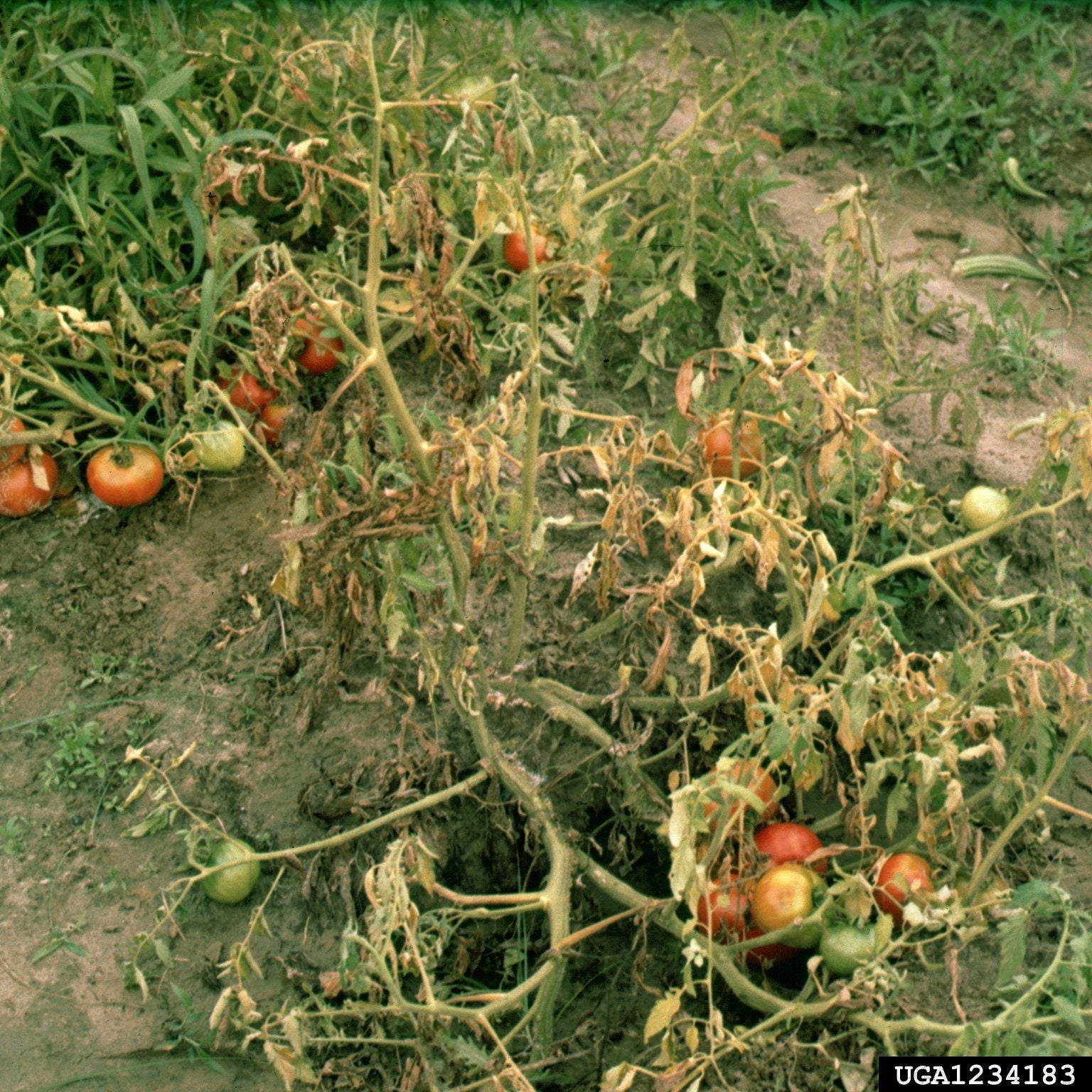

This indicates that the variety is resistant to verticillium wilt. When purchasing tomato seeds and tomato plants look for the initial V at the end of the tomato’s name: Tomato - New Yorker (V). Just one day of saturated soil will incur infection especially if combined with cool soil: 13☌ (55° F). Plant tomatoes in well-drained soil and don’t overwater as this encourages this disease. Don’t plant tomatoes, potatoes, eggplants and/or peppers in the same bed for at least 4 years! This is why I had to make another veggie bed, just so I could rotate my crops more efficiently. Remove all the plant parts from the area so they don’t re-contaminate the soil. Since this fungi enters the plant through the roots from contaminated soil, remove plants as soon as they become infected. Once a plant is infected toss it in the garbage as there is no control. All members of the tomato family are vulnerable: potatoes, peppers and eggplants (aubergines). Tomatoes are not the only vegetable prone to this disease. If it has a dark centre when severed, it is verticillium wilt. A good indication of this disease is inside the stem. Plants not only wilt and discolour, they become stunted and fruit, if any, are small, yellow and don’t develop. This fungi prevents water from translocating throughout the plant and contains a toxin that kills and starves plant tissues as it spreads.

As the disease progresses, the leaf veins turn brown followed by dead spots. Look for yellow blotches on the lower leaves that may curl inwards. Often only one side of the plant is affected and the plants recover at night. A good indication that the wilting is due to this disease and not a lack of water is moist soil (duh). Wilting tomato plants may not be thirsty they may be infected with the fungal disease, verticillium wilt. If growing in pots, make sure the container is larger enough that it doesn’t dry out repeatedly and include a good sized drainage tray.

Apply a mulch, keep soil evenly moist, avoid soil from drying out, avoid high nitrogen fertilizers as it ties up the calcium in the soil and avoid hoeing close to roots. To prevent this condition check soil pH in spring and apply dolomite or dolopril lime according to direction. Add them to your compost bin and apply the finished compost to your veggie beds and containers yearly. Crushed eggshells mixed into the soil is also a great idea. Work the lime into the soil, following the manufacturer’s instructions, then water well. Add dolomite lime to increase soil pH and as an added bonus, the lime also contains calcium. Soil that is too acidic also prevents calcium absorption. Tomato plants grown in containers often suffer this malady as keeping the soil consistently moist is tricky during the heat of the summer.

Inconsistent watering, especially drought, prevents the distribution of calcium throughout the plant. The two main reasons why the plant cannot absorb calcium are inconsistent watering and soil that’s too acidic. This is not a disease, but a lack of calcium in the soil. It becomes flattened or sunken, brown and leathery. Wait at least a couple of years, preferably four, to ensure there is no cross contamination.īlossom-End Rot appears on the bottom end of the tomatoes. To prevent this disease, water in the morning, rotate crops, especially between tomatoes and potatoes crops. The best thing to do is to pull out and discard infected plants and certainly don’t compost them.įog and morning dew promotes this disease, which we can do little about, however it is prudent not to get the foliage wet when watering. This disease works quickly and soon entire plants succumb. As the disease progresses, a white fungal growth appears on affected areas. The tomato fruit develop dark brown circular spots that become mushy. On the stems it appears as brown splotches. Foliage develops large, brown blotches that soon turn droop, turn a light tan and become crispy. The obvious symptoms appear first on the lower, older leaves. Late blight is quite common this time of year. This disease has been around for a while as it was responsible for the infamous Irish potato famine in the 1800’s. If your tomato plants are not looking healthy, they could be suffering from a disease called Late Blight ( Phytophthora infestans), which also affects potatoes. Lily-of-the-Valley Shrub, Pieris japonica


 0 kommentar(er)
0 kommentar(er)
